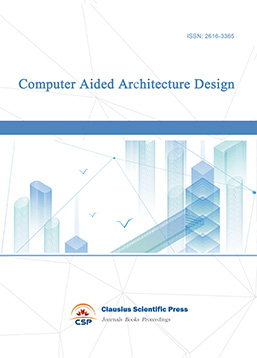Research and Analysis of Urban Renewal and Renovation Strategy under the Concept of "Urban Acupuncture"
DOI: 10.23977/jceup.2024.060118 | Downloads: 6 | Views: 91
Author(s)
Shiyu Wang 1, Qinghui Sun 1, Xinyuan Song 1
Affiliation(s)
1 School of Construction, Guangdong Institute of Technology, Zhaoqing, Guangdong, 526000, China
Corresponding Author
Shiyu WangABSTRACT
In this paper, the strategy of urban renovation and renewal under the concept of "urban acupuncture" is deeply analyzed, and the new methods to deal with the problems of urban decline and functional imbalance in the development of modern cities are discussed. By comparing the traditional methods of large-scale urban renewal with the micro-intervention strategies of "urban acupuncture", this study finds out the shortcomings of traditional methods in terms of society, culture and environment, and also emphasizes the importance of refinement, participation and sustainability in urban renewal. In the experimental stage, this paper puts forward a series of experiments to deeply explore the urban renewal projects that adopt the "urban acupuncture" strategy. Through the experimental evaluation of "urban acupuncture" renewal strategy in different fields, this paper shows its positive influence in many aspects of urban old reform. In the evaluation experiment of residents' satisfaction, the satisfaction of living environment increased from 2.8 to 4.2, the satisfaction of infrastructure increased from 3.0 to 4.5, the satisfaction of public service increased from 3.1 to 4.3, and the vitality of community increased from 2.5 to 4.0. In the evaluation of community vitality index in experiment 2, community participation increased from 60 points to 85 points, the frequency of public space use increased from 50 points to 75 points, and the number of community activities increased from 30 to 60 points. In the ecological benefit assessment experiment, the green coverage rate increased from 30% to 45%, the air quality index decreased from 120 to 80, and the rainwater recycling rate increased from 20% to 35%. From the above experimental data, it can be seen that the renewal strategy of "urban acupuncture" has improved the quality of life of residents, enhanced the vitality of the community, enhanced the urban ecological environment and promoted economic development, and has significant benefits, but there is still room for improvement in cost-effectiveness.
KEYWORDS
Urban Renewal Strategy, Urban Acupuncture, Residents' Satisfaction, Community Vitality, Cost-Benefit AnalysisCITE THIS PAPER
Shiyu Wang, Qinghui Sun, Xinyuan Song, Research and Analysis of Urban Renewal and Renovation Strategy under the Concept of "Urban Acupuncture" . Journal of Civil Engineering and Urban Planning (2024) Vol. 6: 124-131. DOI: http://dx.doi.org/10.23977/jceup.2024.060118.
REFERENCES
[1] Jin Ying, Fu Rao. Exploration of revitalization of commercial port in Changchun from the perspective of "urban acupuncture". Journal of Jilin Jianzhu University, 2023, 40(3):66-70.
[2] Yang Xinyu, Wang Jingjing. Research on micro-renewal strategy of old community based on "urban acupuncture" theory: A case study of Yulin Community in Chengdu. Chongqing Architecture, 2022, 21(8):4-6.
[3] Liu Linding, Chen Yi. A preliminary study on the micro-renewal of old community landscape based on landscape triad theory and urban acupuncture theory: A case study of Tea Garden Community of Checar Factory in Zhuzhou City. Housing Science and Technology, 2022, 42(9):1-5.
[4] Zhang Renmei, Liu Fei, Xia Tiantian. Study on the micro-renewal of Shunyu Garden community in Jinan City based on the theory of "urban acupuncture". Garden Architecture, 2022, 39(11):130-137.
[5] Bai Chunxue. Research on Urban Acupuncture and Moxibustion in public space renewal strategy of Yinghua Garden community in Beijing. Digital design. CG WORLD, 2020, 009(016):P. 144-145.
[6] Jin S H. Full Empowerment and the Participatory Governance in Rural Communities: A Comparative Study Based on Two Cases. Contemporary Social Sciences (English), 2022, 7(4):83-106.
[7] Ruan W, Jun D, Chuyi Z, et al. Research on Guarantee Mechanism of Sustainable Development of Oral History Construction in China. Library and Information Service, 2020, 64(17):49-57.
[8] Kamau S J, Rambo C M, Mbugua J M. Influences of Community Participation on School Infrastructure Policy Implementation and Performance of Construction Projects. Open Journal of Social Sciences, 2021, 09(3):173-187.
[9] Angelia N, Batubara B M, Zulyadi R,et al. Analysis of Community Institution Empowerment as a Village Government Partner in the Participative Development Process. Budapest International Research and Critics Institute (BIRCI-Journal) Humanities and Social Sciences, 2020, 3(2):1352-1359.
[10] Guan C. The Micro-renewal of Streets and Alleyways in Qingzhou Ancient City Based on The Study of "Acupuncture Theory". International Journal of Education and Humanities, 2024, 12(2): 12-18.
[11] Liang Haoyuan, Li Jing. Chinese spatial re-identification of comprehensive land improvement and its integration and improvement with ecological-living-life space. Journal of China Agricultural University, 2024, 29(03): 189-203.
| Downloads: | 3791 |
|---|---|
| Visits: | 107861 |
Sponsors, Associates, and Links
-
Journal of Sustainable Development and Green Buildings

-
Landscape and Urban Horticulture

-
Bridge and Structural Engineering

-
Soil Mechanics and Geotechnical Engineering

-
Journal of Municipal Engineering

-
Heating, Ventilation and Air Conditioning

-
Indoor Air Quality and Climate

-
Computer Aided Architecture Design


 Download as PDF
Download as PDF